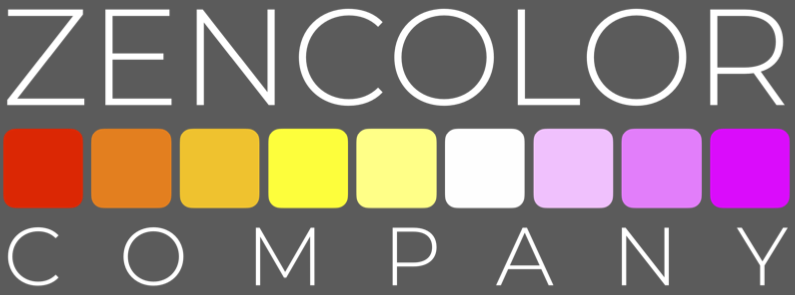
The path to zenColor perfection takes imagination, but it is certainly worth the journey. The goal is to integrate image intelligence in order to create color data intelligence throughout the entire product lifecycle. This does not require that you change the way that you currently work, but rather that you apply a few simple steps to include the digital data into the workflow.
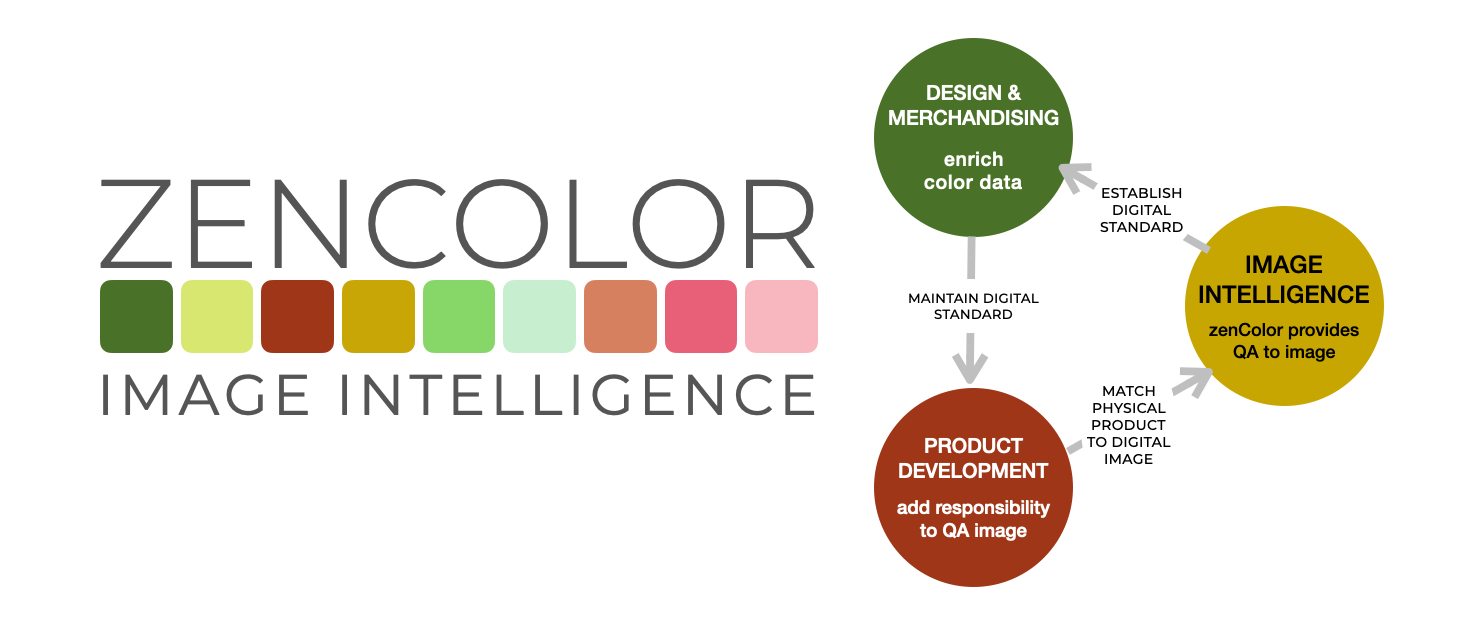
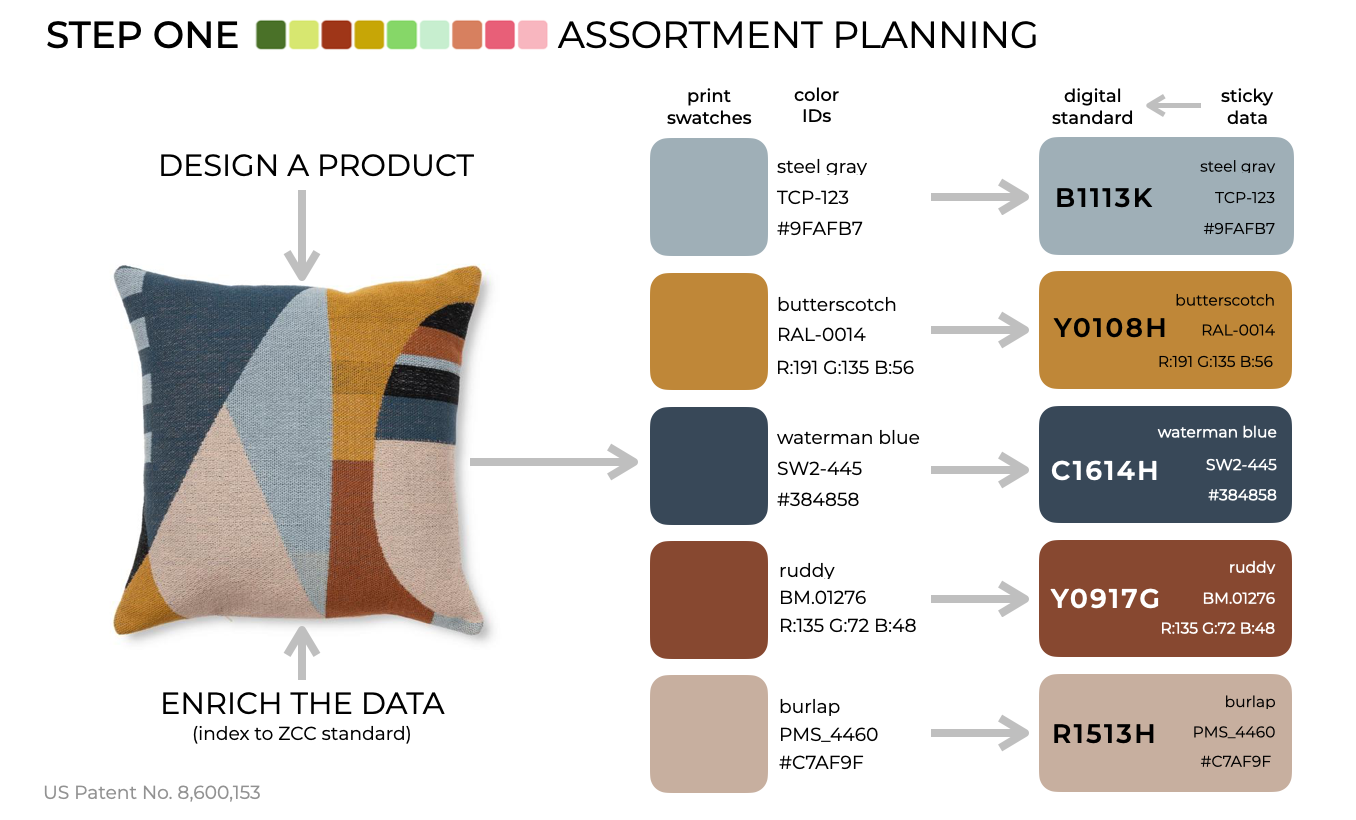
Color data intelligence starts at design inception, following the mind to market.
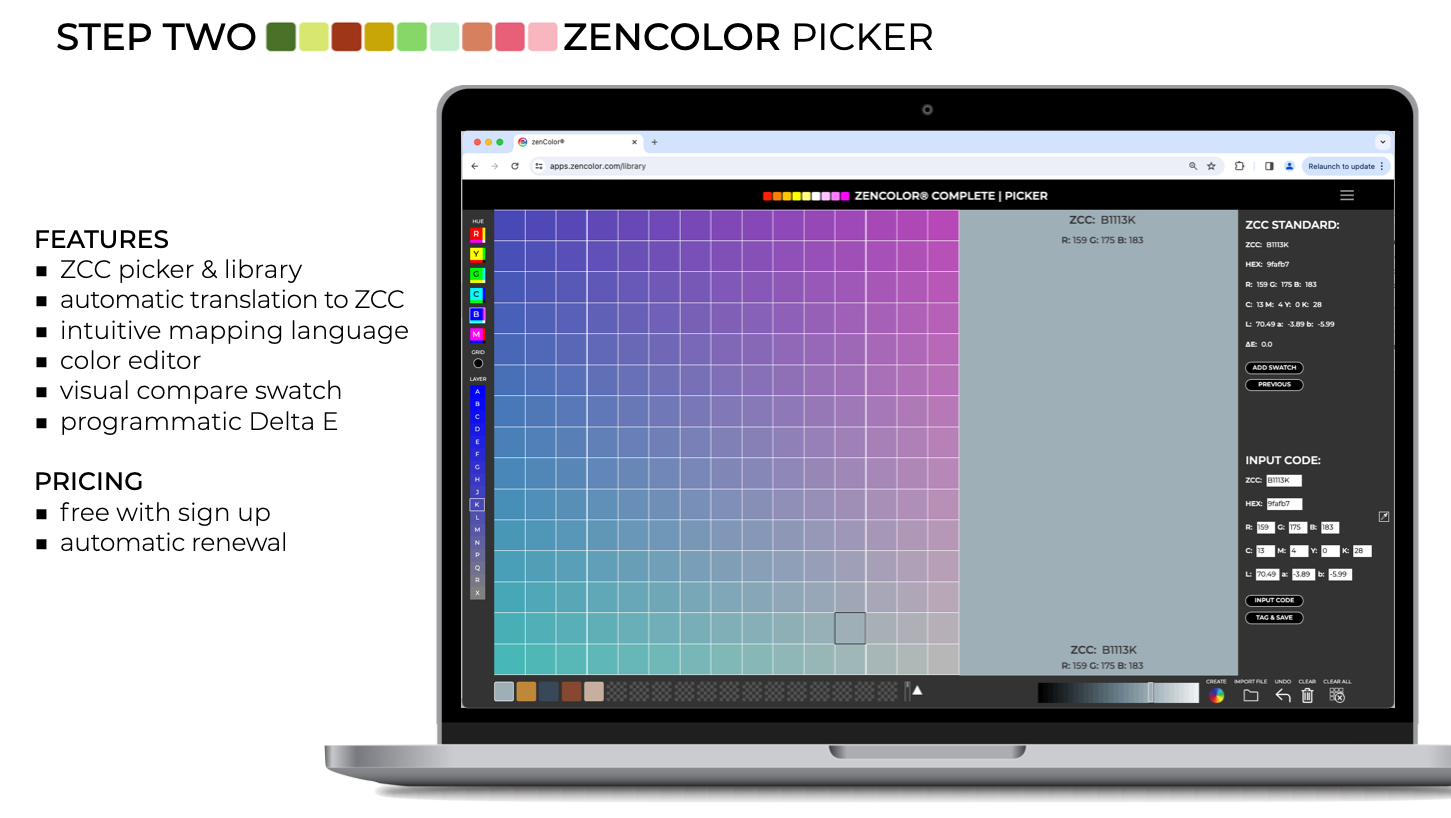
Merging the color data to our universal standard is fast and efficient. Simply input the digital color value, process, and convert.
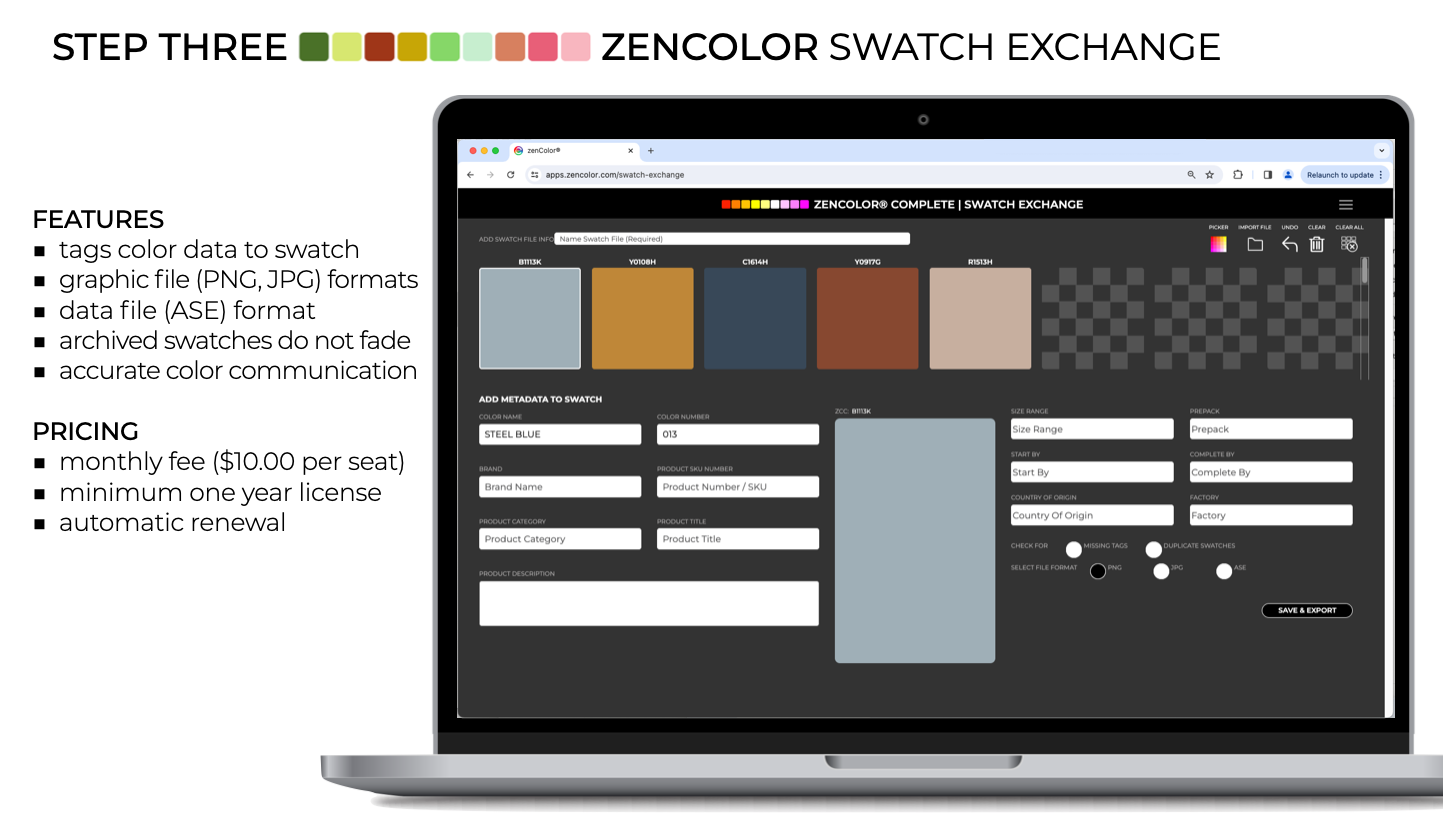
Embedding the product and color metadata into a swatch file establishes the digital color standard at design inception and integrates that standard throughout the product lifecycle.
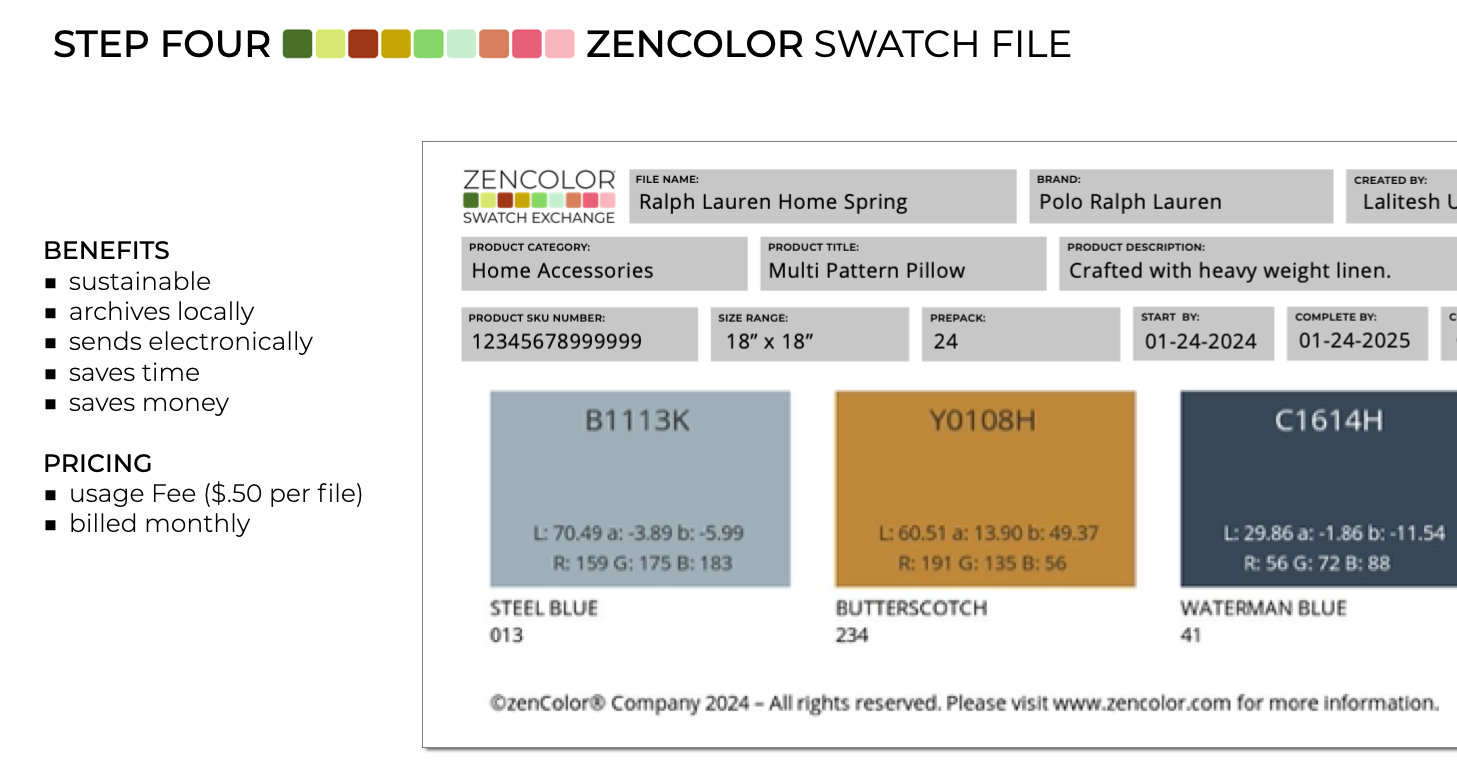
Swatch files archive locally and share globally. It’s a fast, cost effective, and sustainable way to communicate color data.
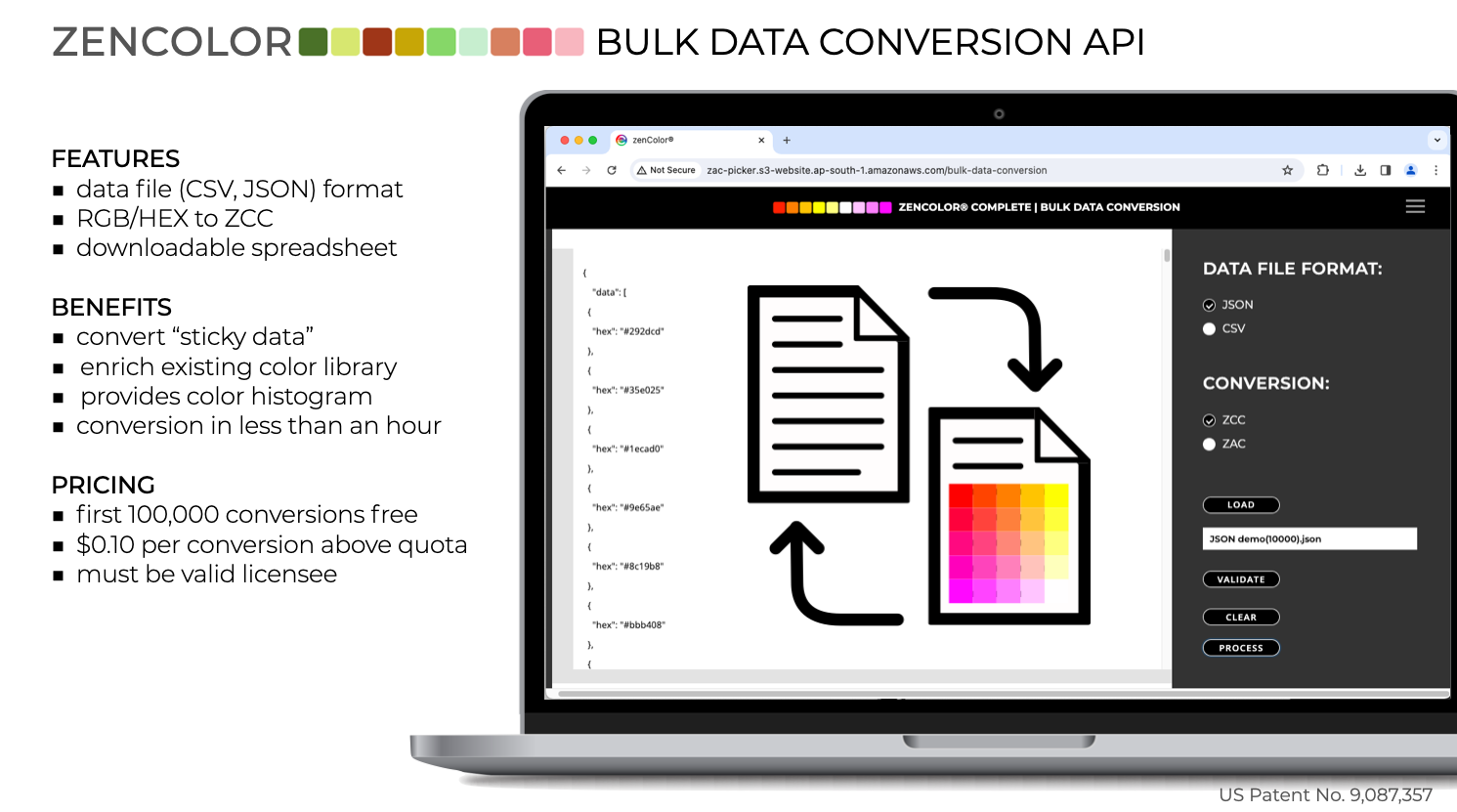
Bulk Data Conversion can take any existing color library or database and convert it into an intelligent histogram based on our language model that gives color data meaning. We can also do the same for trending color data. The process is fast, efficient, and without limitations. This is critical to understanding past, present, and future consumer color preferences in real-time.
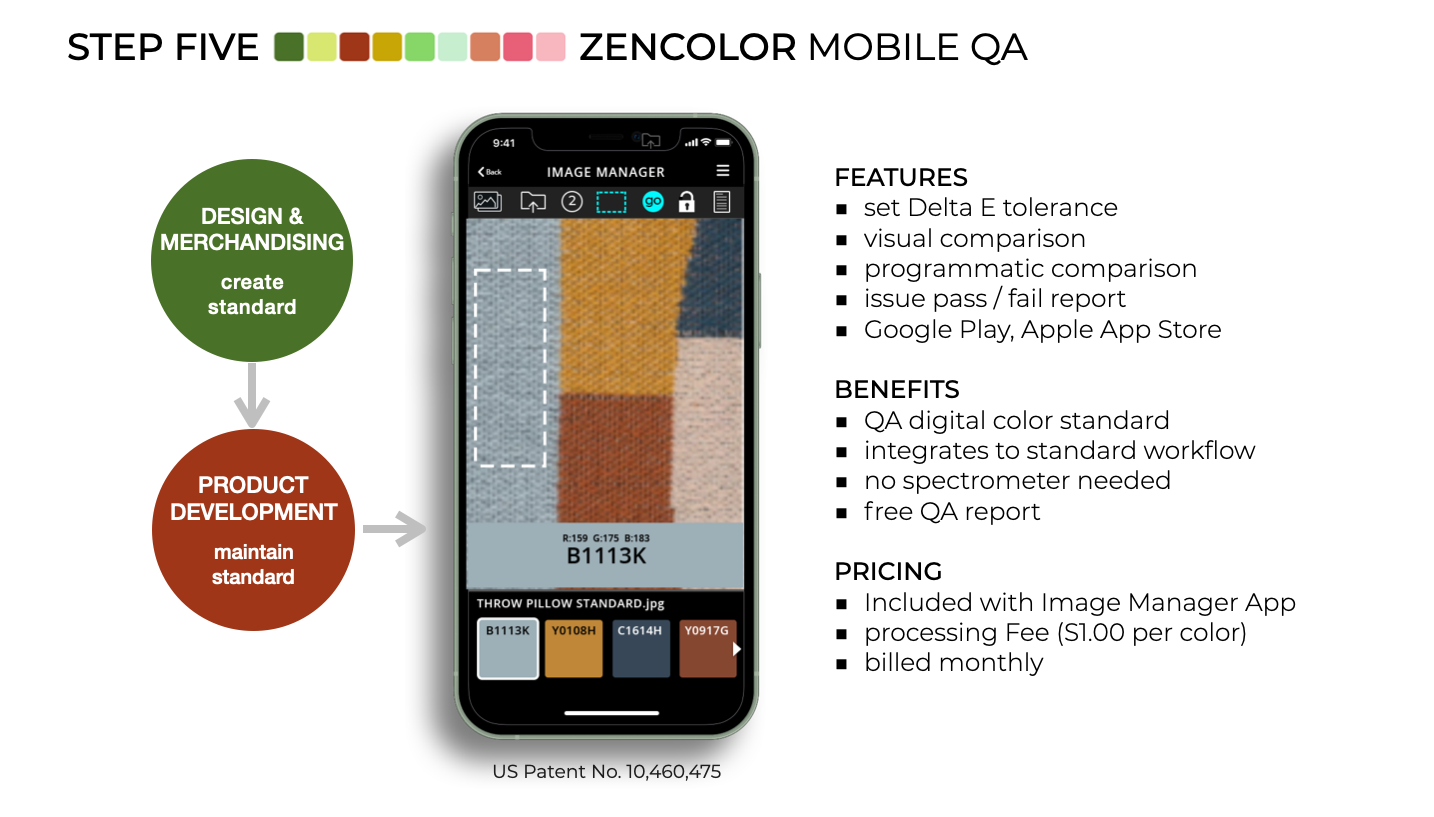
Maintaining a digital color standard for lab dips and bulk materials has never been easier or more efficient. zenColor provides the color language model and technology that makes this process possible.
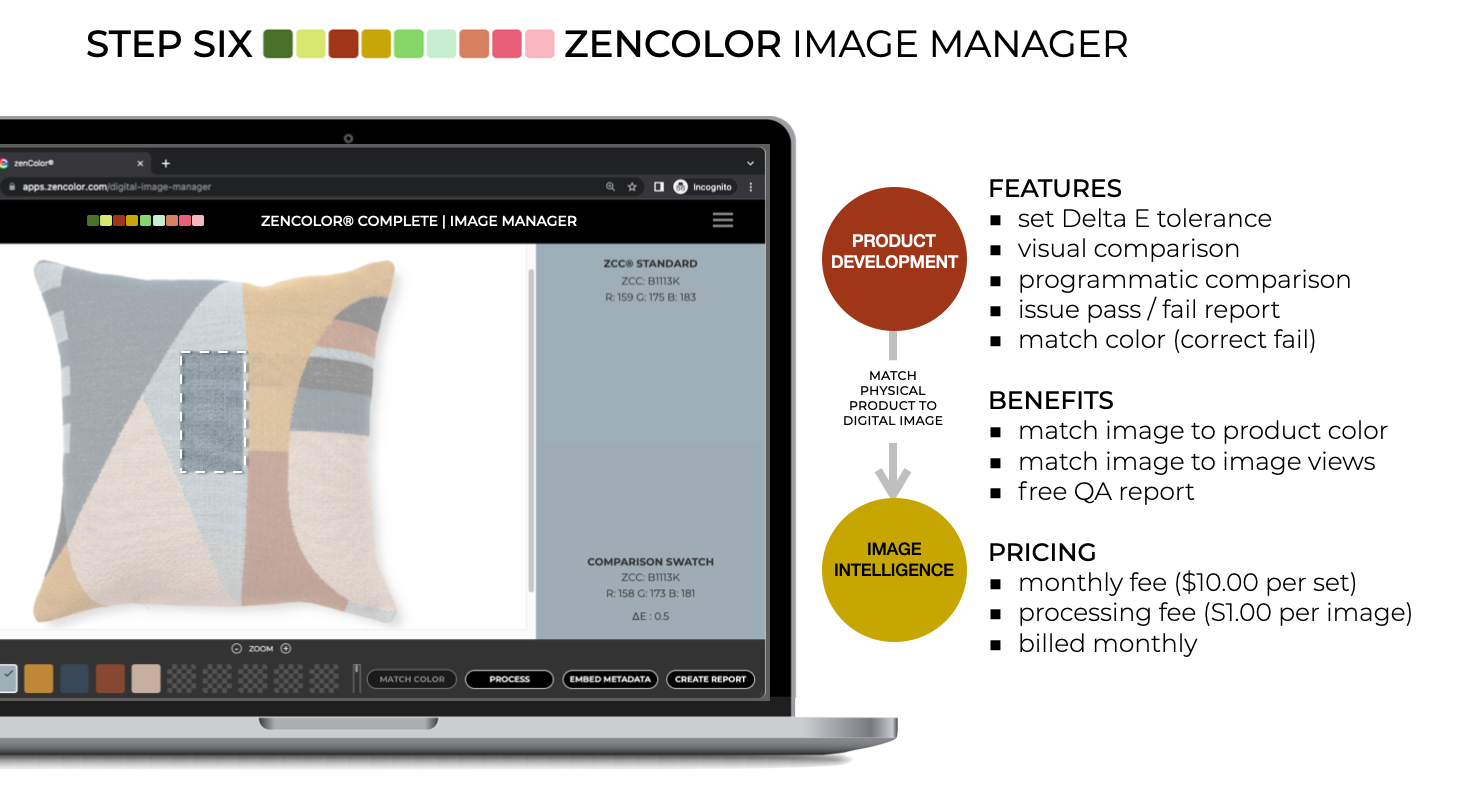
Matching a digital image to a digital standard programmatically makes Quality Assurance possible. It does not take away from the artistic quality of the process. Instead, it adds an invaluable and objective tool to properly match the color of the product to the color of the main image and all secondary product views.
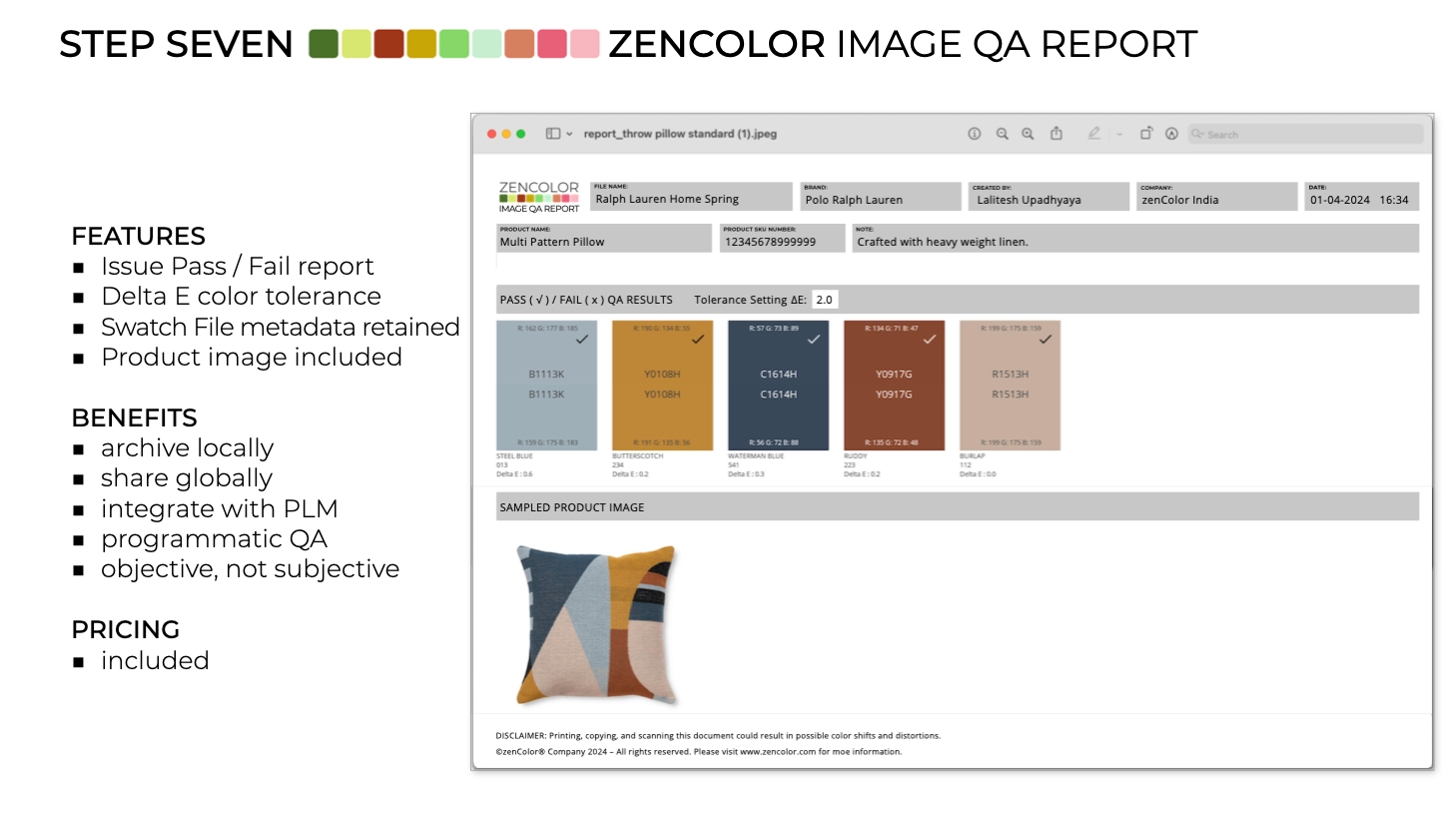
There is no current method to establish quality assurance for color matching other than through the subjectivity of the human eye. Machines, unlike humans, cannot “see” color. That makes for an invaluable tool for objective quality assurance. The Pass/Fail report is based on the programmatic color tolerance between the digital image and the digital standard. It is completely objective.
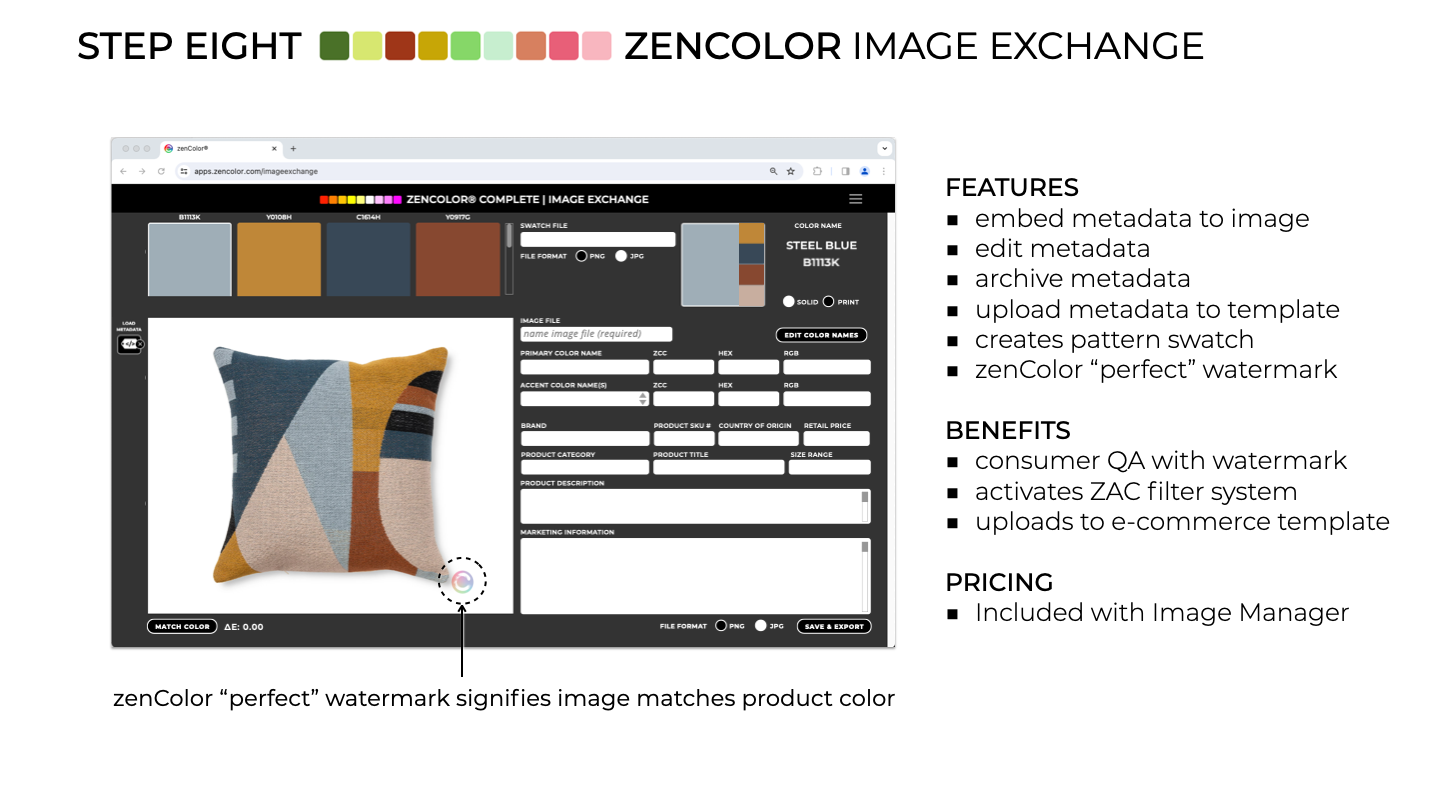
An image must “pass” the color tolerance requirements before it can be moved to Image Exchange. Here the product metadata, including the zenColor “perfection” watermark, is embedded in the image. The image can then be forwarded to the Digital Asset Manager (DAM) and seamlessly uploaded into an eCommerce template.
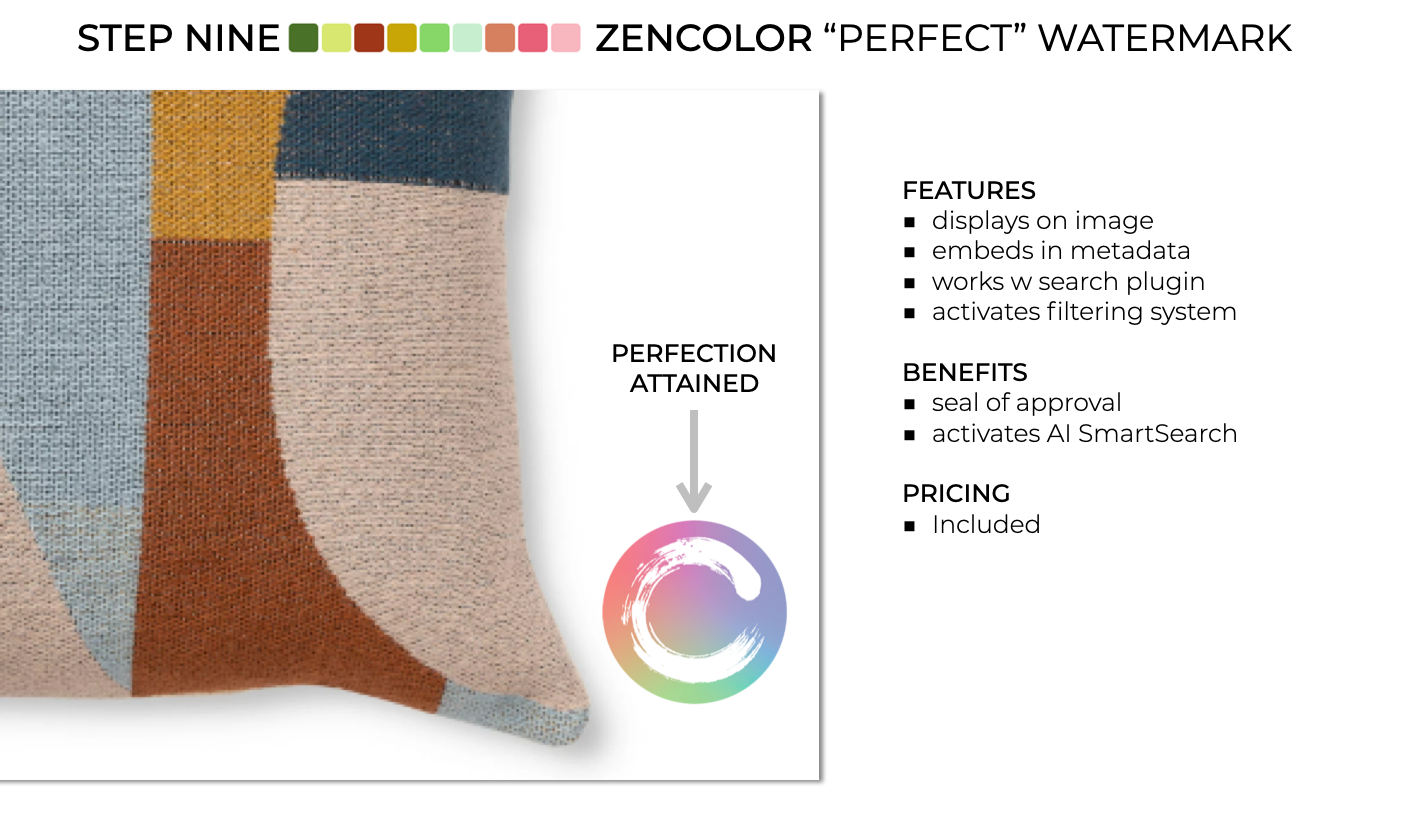
The attainment of our zenColor watermark represents perfection. It indicates to consumers that best practices have been used and maintained to match the digital image to the physical product color. The main image finally matches the other product views. The color swatch actually represents the color of the product. Consumers can now shop with confidence.
More importantly, without the embedded watermark our patented search plugin will not recognize the image to apply and replace the current color filters. Our zenColor Analytics Code (ZAC) provides a new intelligent filtering system that homogenizes the color language across the entire eCommerce platform, unleashing the future of online shopping.
ARE YOU INTERESTED IN LEARNING MORE?
